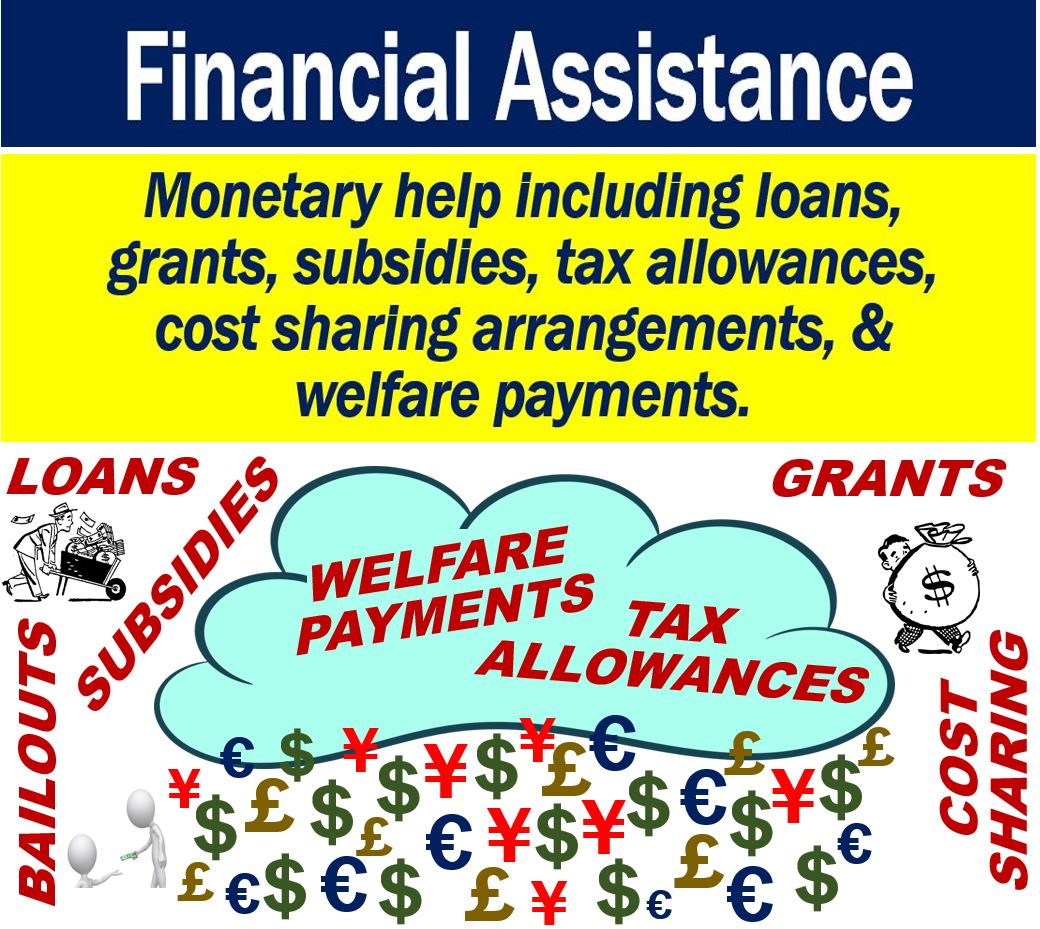What is financial assistance? Definition and example
Financial assistance is any type of monetary help or aid that a person, organization, or government receives. The financial assistance may be in the form of guarantees, loans, cost-sharing arrangements, subsidies, or welfare payments. Tax allowances, grants, and government bailouts of struggling companies are also examples of financial assistance.
In the world of public companies, financial assistance refers to help a company gives in purchasing its own shares. It may also include help in the purchase of the shares of its holding companies.
A public company is a company whose shares we, i.e., the ‘public,’ can buy on the stock market.
In many jurisdictions, helping in the purchase of shares is either illegal or restricted.
BusinessDictionary.com has the following definition of the term:
“Loans, loan guarantees, subsidies, tax allowances, cost sharing arrangements, or outright grants provided by third-parties (usually home or foreign government agencies).”

Lawmakers may approve financial assistance to avert a national disaster or help vulnerable people. Governments also provide financial assistance to protect part of the economy.
Types of financial assistance
Below are some of the most common types of financial assistance and a brief explanation of their meanings.
Grant
A grant is money that a local or national government, charity, organization, or person gives for a specific purpose.
Unlike loans, the receivers of grants do not have to pay back the money.
In most cases, grants are for home improvements, research, education, and community projects. Some organizations also award grants to help people set up their own business.
Subsidy
A subsidy is financial assistance that the government gives directly to farmers, companies, and organizations. They are usually to encourage the production of something, boost exports, or promote research.
The government may also give subsidies to prevent bankruptcy, reduce unemployment, or make something more affordable.
In some countries, the government subsidizes, for example, its staple food. A staple food is a food that people eat routinely and in large quantities.
A staple food represents a dominant portion of a country’s standard diet. Rice in China, tortillas in Mexico, and sorghum in parts of Africa are examples of staple foods.
Bailout
This type of financial assistance exists when a company or many companies in an industry are about to collapse.
During the 2007/8 Global Financial Crisis and the Great Recession that came after it, many banks nearly died. In fact, they would have died if the governments in Europe, North America, and other parts of the world had not saved them.
A bailout occurs when governments, i.e., taxpayers, save a dying company by injecting money into it.
Bailouts are one of the most controversial forms of financial assistance.
Many people disagreed that banks should get special treatment when much of their country’s industries had disappeared. The government had done nothing for those industries.
What infuriated taxpayers was that the giant bonuses that bankers used to receive soon came back.
In fact, many top executives in British banks continued getting giant bonuses while still under the taxpayer’s protection.
In many countries, we call people who get giant bonuses that are not tied to performance ‘fat cats.’
Welfare
The term ‘welfare’ refers to financial assistance that people with limited resources receive from the government.
Welfare aims to ensure that everybody is physically and mentally healthy, secure, and comfortable.
In the United States, the term ‘to be on welfare’ means to be receiving financial assistance from the state.

